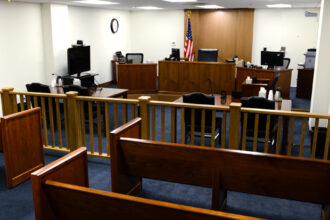The roads are becoming more unpredictable with each passing year. Congestion, distracted driving, and aging infrastructure all contribute to a growing concern across the country: the steady increase in car accident claims. While some crashes result in little more than a dented fender, others bring long-term consequences that ripple through a driver’s finances, health, and peace of mind. Understanding how and why accident claims are rising can help drivers make informed decisions that protect them on the road and beyond.
Shifting Traffic Patterns and Their Impact
Urban sprawl and changing commute habits have shifted the daily flow of traffic in many regions. More drivers are on the road outside of peak hours, often leading to unfamiliar conditions and an increased likelihood of accidents. Mixed-use roads that once catered mostly to commuters now see delivery vehicles, rideshare drivers, and cyclists sharing tight spaces. With more interactions per mile, the potential for fender benders and serious crashes alike has increased.
This rise in interactions leads directly to a higher number of insurance claims. Even minor incidents can result in expensive repairs, especially with modern vehicles loaded with sensors, cameras, and tech-driven safety features. Drivers often find themselves caught off guard by the true cost of what seems like a minor bump.
The Role of Technology and Driver Distraction
Smartphones, infotainment systems, and navigation apps may make driving more convenient, but they bring distraction. Glancing at a screen for just two seconds can double the chance of a collision. While hands-free options are often marketed as safer, they still require a mental shift that can delay reaction times. It’s not just drivers of passenger vehicles, either. Commercial drivers and delivery contractors face the same temptations and often work under tight deadlines, raising the risk for everyone around them.
In response, law enforcement and state agencies have increased penalties for distracted driving. Yet enforcement remains difficult. Unless there is video evidence or an admission of guilt, proving distraction after the fact can be challenging. This leaves insurers relying on witness accounts, accident reconstructions, and circumstantial evidence to determine fault.
Weather Events and Climate Challenges
Unpredictable weather patterns have led to more frequent and intense storms, affecting road conditions and visibility. Heavy rain, snow, ice, and flooding create dangerous driving scenarios that lead to sudden, unavoidable crashes. Drivers in areas unaccustomed to such conditions may not have the skills or equipment to navigate safely.
Insurance companies are tracking these climate-related trends closely. Claims spike after major weather events, particularly in areas where infrastructure is not equipped to drain excess water or handle snow accumulation. As the frequency of these events grows, so does the number of claims filed—and the rates that drivers may face as a result.
Insurance Adjustments and Delays in Payouts
One consequence of the rising volume of claims is a delay in insurance responses. Adjusters are working through larger backlogs, especially after major storms or holidays when crash numbers climb. Many drivers experience longer wait times before their claims are processed, adding frustration to already difficult situations.
Increased claim activity means tighter scrutiny of the details. Insurers may take longer to assess fault, determine compensation, and approve repairs. This delay often forces drivers to pay out of pocket for interim transportation or repairs, and then wait weeks or months for reimbursement.
Legal Support Becoming More Commonplace
With insurance companies becoming more cautious and claims growing more complicated, legal support has become a more common component of post-accident recovery. More drivers now seek guidance to navigate denials, negotiate settlements, or manage disputes over fault and compensation. Lawyers specializing in car accidents often help clarify rights, gather documentation, and present a case that improves the chance of a favorable outcome. Drivers in dense cities or areas with a high rate of accidents are especially likely to turn to Car Accident Representation in Laredo or your area when the stakes are high. Navigating the complex process of filing a claim, securing medical reimbursement, or defending against a lawsuit requires clarity and confidence, both of which experienced professionals can provide. Legal representation acts as a buffer against aggressive settlement tactics and delays.

Medical Bills and Long-Term Injuries
One of the most burdensome outcomes of any car accident is the medical fallout. Even low-speed impacts can lead to whiplash, soft tissue injuries, or chronic pain that develops over time. Without immediate visible damage, some drivers may delay treatment, only to discover that recovery is long and costly.
Medical bills begin to accumulate the moment an ambulance is called or an emergency room visit is logged. For those without comprehensive coverage or with high deductibles, these costs can quickly become overwhelming. Physical therapy, prescription medication, and time away from work all contribute to the long-term financial stress that compounds the trauma of the accident itself.
As car accident claims continue to rise, understanding the contributing factors and preparing for the aftermath becomes increasingly valuable. Whether it’s handling insurance delays, dealing with medical costs, or seeking legal support, staying informed gives drivers a better chance to recover fully, physically, financially, and legally, after a crash.















